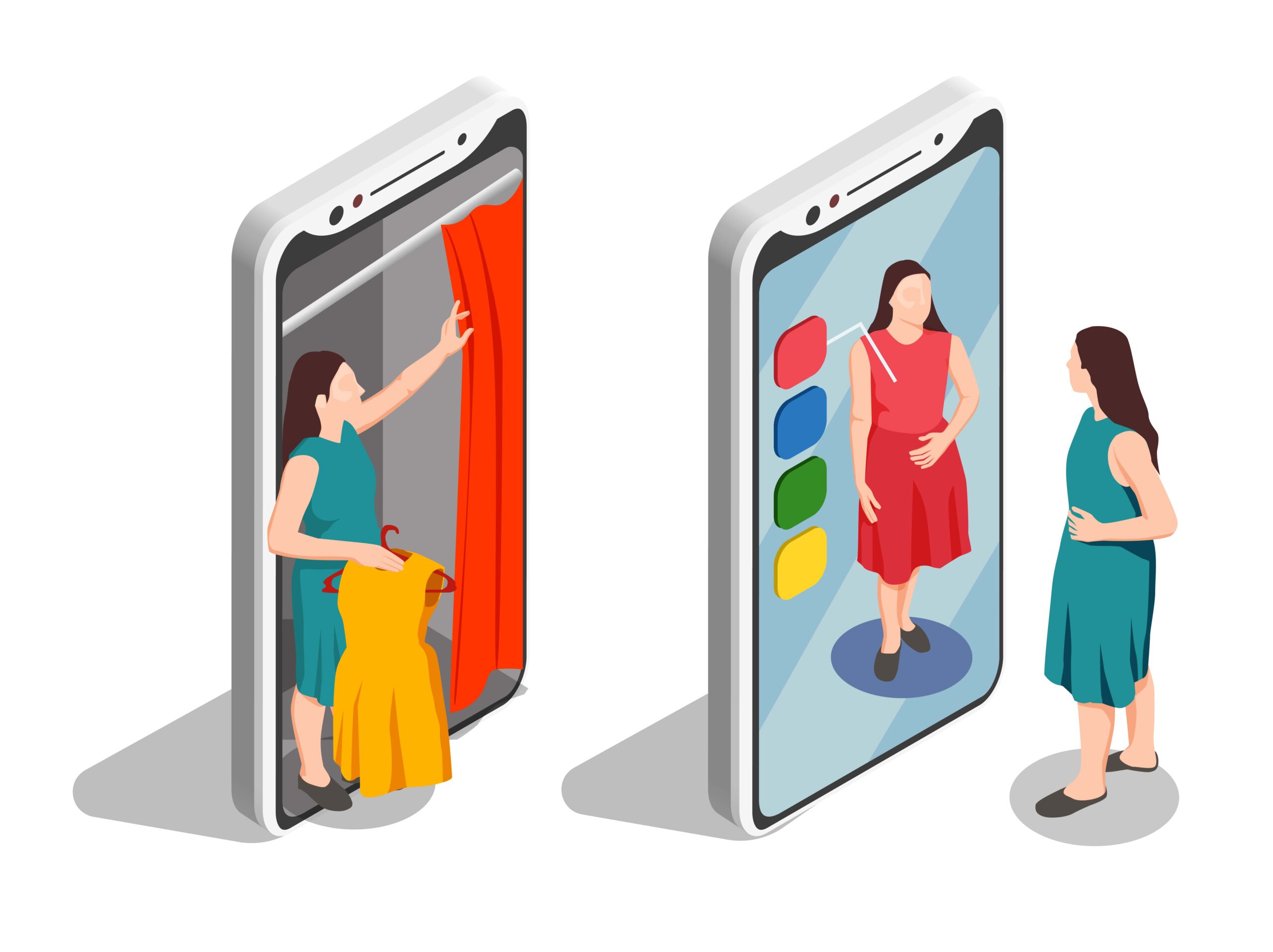Introduction
In today’s digital age, smartphones have become an integral part of our lives. We rely on them for communication, entertainment, and information which eventually raises the demand for mobile app development services. However, there’s one functionality that has been missing from our smartphones: a mirror app. Imagine the convenience of having a mirror readily available on your phone whenever you need to check your appearance. In this article, we will explore the concept of a mirror app and how it can be developed to meet your needs.
But first, why a mirror app? Well, there are countless situations where having a mirror on your phone can come in handy. Whether you’re applying makeup, fixing your hair, or simply ensuring you look presentable, a mirror app offers a quick and easy solution. With just a tap, your smartphone can transform into a convenient mirror, eliminating the need to carry a physical mirror with you. A close alternative to it is learning about human body using an intuitive mobile app.
The Concept of a Mirror App
A mirror app is a software application that utilizes the front camera of your smartphone to display your reflection in real-time. It mimics the functionality of a physical mirror, allowing you to see yourself clearly and make necessary adjustments to your appearance. The app’s interface typically resembles a mirror, with minimal distractions to ensure a clean and focused user experience.
Benefits of Using a Mirror App on a Smartphone
Having a mirror app on your smartphone offers several advantages. Firstly, it saves you the trouble of carrying around a physical mirror, especially when you’re on the go. You can simply whip out your phone and use the mirror app whenever and wherever you need it. Additionally, a mirror app provides the convenience of portability and discretion. It’s discreet and doesn’t attract attention, making it ideal for quick touch-ups in public spaces.
Technical Considerations for Developing a Mirror App
Developing a mirror app requires careful attention to technical aspects to ensure a seamless user experience. The app needs to utilize the front camera effectively and process the captured image in real-time.
-
Utilizing the front camera
The mirror app should be designed to utilize the front camera of the smartphone. By capturing the image through the front camera, the app can provide an accurate reflection of the user. This requires efficient camera handling and image processing algorithms to display a clear and real-time reflection.
-
Real-time image processing
To ensure a smooth mirror experience, the app needs to process the captured image in real-time. This involves applying filters and optimizations to enhance the image quality and clarity. The image processing algorithms should be optimized to reduce latency and provide a near-instantaneous reflection.
-
Ensuring image quality and clarity
One of the critical factors for a mirror app is the quality and clarity of the reflected image. The app should have mechanisms to adjust brightness, contrast, and sharpness, allowing users to customize their viewing experience. Additionally, the app should support high-resolution displays to provide a detailed and accurate reflection.
Design and User Interface
To create a user-friendly mirror app, the design and user interface play a vital role. The app’s layout should be simple and intuitive, ensuring that users can quickly understand and navigate through the interface.
-
Simple and intuitive layout
The mirror app should have a clean and uncluttered layout, resembling an actual mirror. The user interface should be free from unnecessary buttons or distractions to provide a seamless reflection experience. With a simple tap, users should be able to access the mirror functionality instantly.
While simplicity is essential, it’s also important to provide customization options for users to personalize their mirror app experience. This can include features such as adjustable brightness, zooming capabilities, and different mirror frames or themes to suit individual preferences.
-
Additional features for enhanced user experience
To differentiate the mirror app from a physical mirror, incorporating additional features can enhance the user experience. These features may include the ability to take selfies directly from the app, apply filters or effects to the reflected image, or even integrate with social media platforms for easy sharing.
Development Process
The development process of a mirror app involves several key steps, from choosing the right platform to collaborating with designers and developers.
-
Choosing the right platform (iOS, Android)
Deciding on the platform for the mirror app is crucial. Depending on your target audience and market research, you can choose to develop the app for iOS, Android, or both platforms simultaneously. Each platform has its own development requirements and guidelines that need to be followed.
-
Selecting the development framework
To expedite the development process and ensure compatibility across multiple devices, selecting the right development framework is essential. Frameworks such as React Native or Flutter allow for cross-platform development, minimizing the need for separate codebases for each platform.
-
Collaborating with designers and developers
Developing a mirror app requires a collaborative effort between designers and developers. Designers will focus on creating an appealing user interface, while developers will handle the technical aspects of the app. Effective communication and coordination between the two teams are crucial to ensure a cohesive and polished final product.
Privacy and Security Concerns
As with any app that accesses the camera, privacy and security are paramount when developing a mirror app.
-
Accessing the front camera responsibly
The mirror app should adhere to strict privacy guidelines and ensure that it only accesses the front camera when explicitly permitted by the user. Clear permissions and explanations should be provided to users regarding camera usage, and their data should be handled securely.
-
Safeguarding user data and images
To build trust with users, it’s crucial to implement robust security measures to safeguard their data and images. This includes encrypting data transmission, securely storing user images (if applicable), and adopting industry-standard security practices to prevent unauthorized access.
-
Privacy settings and permissions
The mirror app should offer privacy settings that allow users to control their camera permissions and specify the level of access the app has. This empowers users to customize their privacy preferences and ensures transparency in data handling.
Testing and Quality Assurance
Thorough testing and quality assurance are essential to deliver a stable and reliable mirror app.
-
Ensuring app stability and performance
The mirror app should undergo rigorous testing to identify and resolve any stability or performance issues. This includes testing the app on various devices, operating systems, and network conditions to ensure it performs optimally in different scenarios.
-
User testing and feedback
User testing plays a crucial role in refining the mirror app. By gathering feedback from a diverse group of users, you can identify usability issues, collect suggestions for improvements, and address any concerns raised by the users.
Based on user feedback and testing results, the mirror app should undergo iterative improvements. Regular updates should be released to address bugs, introduce new features, and enhance the overall user experience.
Launch and Marketing
Launching the mirror app successfully requires a well-thought-out marketing strategy to reach the target audience effectively.
-
App store optimization (ASO)
Optimizing the app store listing with relevant keywords, appealing descriptions, and attractive screenshots can significantly impact the app’s discoverability. This involves conducting keyword research and analyzing competitor apps to optimize the app’s visibility in the app store search results.
Leveraging social media platforms to create awareness and generate buzz around the mirror app can be highly effective. Engaging posts, informative videos, and influencer partnerships can help create a strong online presence and attract potential users.
-
Targeting the right audience
Understanding the target audience and tailoring marketing efforts accordingly is crucial. Identifying demographics, user preferences, and specific use cases for the mirror app will allow you to create targeted campaigns and reach those who would benefit most from the app.
User Feedback and Updates
After the launch, it’s essential to continue gathering user feedback and making regular updates to the mirror app.
Encouraging users to provide feedback through app reviews, surveys, or in-app feedback forms can provide valuable insights. This feedback can help identify areas for improvement, address user concerns, and prioritize new features based on user demand.
-
Addressing bugs and issues
Promptly addressing bugs and technical issues reported by users is crucial to maintaining a positive user experience. Regular bug fixes and performance improvements should be released in the form of updates to ensure the mirror app remains stable and reliable.
-
Regular updates and feature enhancements
To keep users engaged and interested, regular updates should be released with new features, customization options, or improvements to the mirror app’s functionality. This demonstrates a commitment to ongoing development and helps retain existing users while attracting new ones.
Conclusion
In conclusion, having a mirror app on your smartphone can provide unparalleled convenience and practicality. By utilizing the front camera and incorporating real-time image processing, a mirror app can offer a clear and accurate reflection. The design and user interface should be intuitive, allowing users to customize their mirror experience. Development should focus on privacy and security, with thorough testing and quality assurance to ensure a reliable app. Launching and marketing the mirror app effectively, along with continuous user feedback and updates, will contribute to its success. So, why wait?
FAQs (Frequently Asked Questions)
-
Can a mirror app really replace a physical mirror?
While a mirror app offers convenience and portability, it may not fully replace a physical mirror in all situations. However, it provides a practical alternative for quick touch-ups and checking your appearance on the go.
-
Will the mirror app work in low light conditions?
Mirror apps typically utilize the front camera, which may struggle in low light conditions. However, some apps incorporate features like screen brightness boost or front-facing flash to improve visibility in dim lighting.
-
Is the mirror app compatible with all smartphone models?
Mirror apps are generally designed to be compatible with a wide range of smartphone models. However, it’s essential to check the app’s compatibility requirements and ensure that your specific device is supported.
-
Can I zoom in or out on the mirror app?
Some mirror apps may offer zooming capabilities, allowing users to adjust the magnification level. However, not all mirror apps provide this feature, so it’s important to check the app’s functionalities before downloading.
-
How much storage space does the mirror app require?
Mirror apps are usually lightweight and don’t consume significant storage space. The exact storage requirements may vary depending on the app’s features and additional functionalities, but they are typically minimal compared to other apps.










